Dean Fleming was born and raised in Sonora, CA, the gateway to Yosemite Valley. Once the youngest certified professional climbing guide in the country, he eventually combined his love of writing, photography, earth science, and rock climbing into a career of sharing his stoke and expertise through publishing. Dean is the author of the Columbia Bouldering Guidebook and the founder and editor of California Climber Magazine. In this series, he’ll be sharing a taste of some lesser-known, high-quality climbing areas in our favorite state, plus how to take care of these special places for years to come.
Words and images by Dean Fleming. This article was originally published in the Spring 2015 issue of CA Climber.
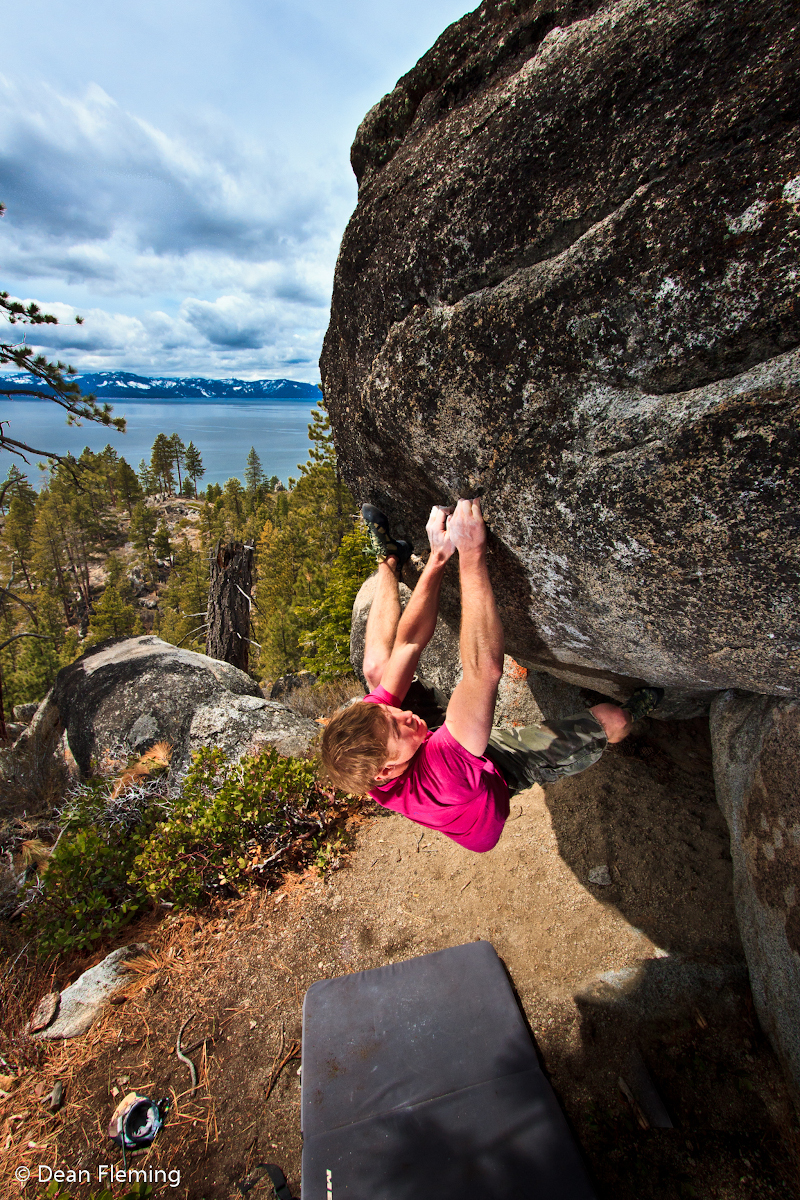
Lake Tahoe’s Southeast Shore is home to a strange harmony of wilderness and modern development. Near Highway 50’s intersection with the California/Nevada boarder, casinos, all-night diners, winter ski shops, and summer tourism hot-spots all collide with a vast landscape of open pine forest, clear blue water and pristine granite outcroppings. From one parking lot near Zephyr Cove, a short walk can bring you to a lakeside cantina where overpriced Mai Tais and Coronas are shoveled over a glass counter like hay in a horse stable, yet a short approach in the opposite direction can lead you to a deserted, warm, sunny mountain top with delectable granite boulders and postcard views…if you know how to find them.
…a short approach in the opposite direction can lead you to a deserted, warm, sunny mountain top with delectable granite boulders and postcard views…if you know how to find them.
Over the past ten years the greater Lake Tahoe region has seen more dedicated route development than any other California bouldering venue. Fueled equally by organic exploration and by the communal excitement of the ensuing release of Dave Hatchett’s series of comprehensive Lake Tahoe bouldering guidebooks, psych for area development has been at an all-time high from early 2005 to present day. With the release of Dave’s bouldering series nearly complete,* it would seem that the establishment of new problems would settle down, or at least slow in pace, but the action has ceased to shift from high gear as new areas are still being discovered at a rapid pace.
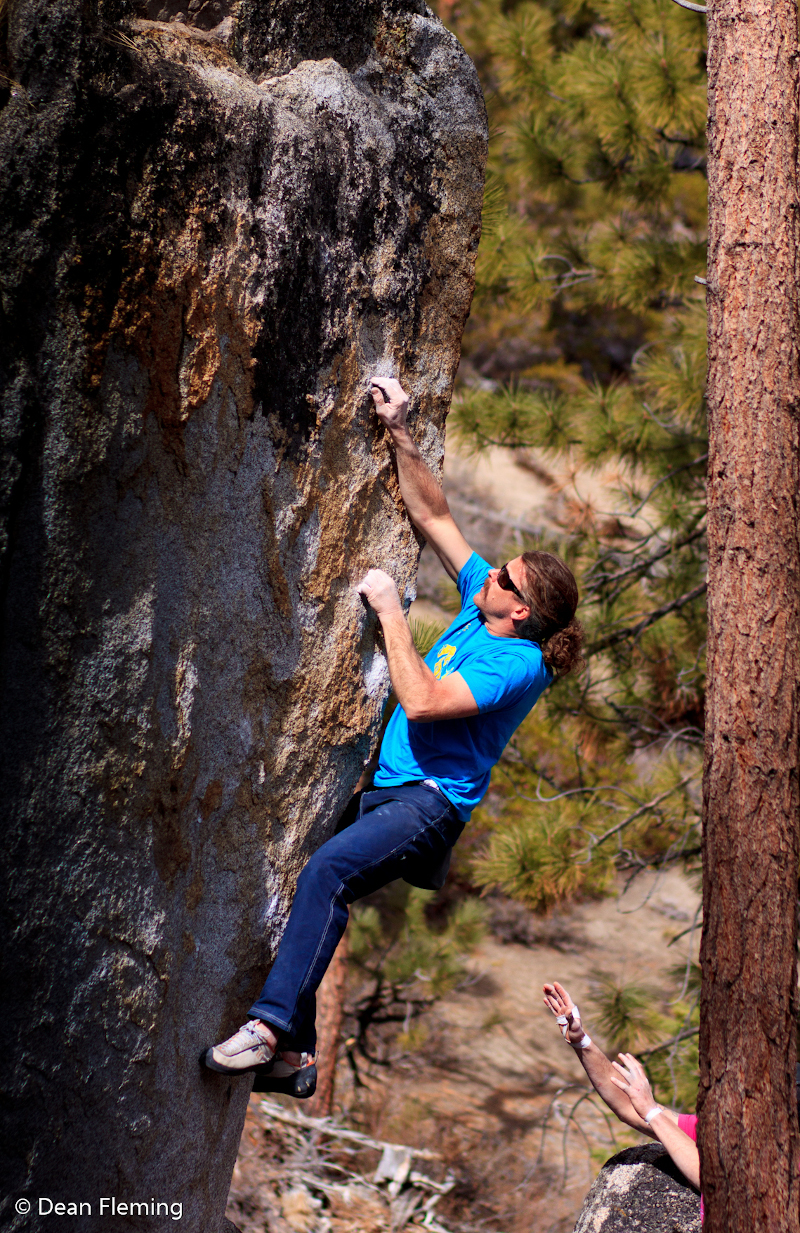
With a huge concentration of problems that include a giant scope of styles, heights and difficulties, the East Shore’s Zephyr Boulders have captivated the attention of local boulderers for a number of years. The boulders along the ridge tops and saddles above Zephyr Cove were first noticed by South Lake resident and long-time area climber Jeremy “J” Sell over 20 years ago. J eventually walked a full tour of the boulders in early 2009 and, alongside a few other area climbers, began the long process of chalking up over 230 problems in the Zephyr Boulder’s four distinct areas: Easy Street, Briquettes, Charcoals and Mecca.
“Forget everything you’ve heard about Tahoe’s East Shore, because the Zephyrs are absolutely mega. […] The approaches are short, the views are great and the rock quality is good.”
The boulders at the Zephyrs are spread out over several square miles and usually located at the tops of ridge lines and prominent summits, but unlike many Lake Tahoe bouldering zones, once you find a group of boulders at the Zephyrs, the problems are highly concentrated. “Forget everything you’ve heard about Tahoe’s East Shore, because the Zephyrs are absolutely mega,” says Hatchett. “The approaches are short, the views are great and the rock quality is good.”
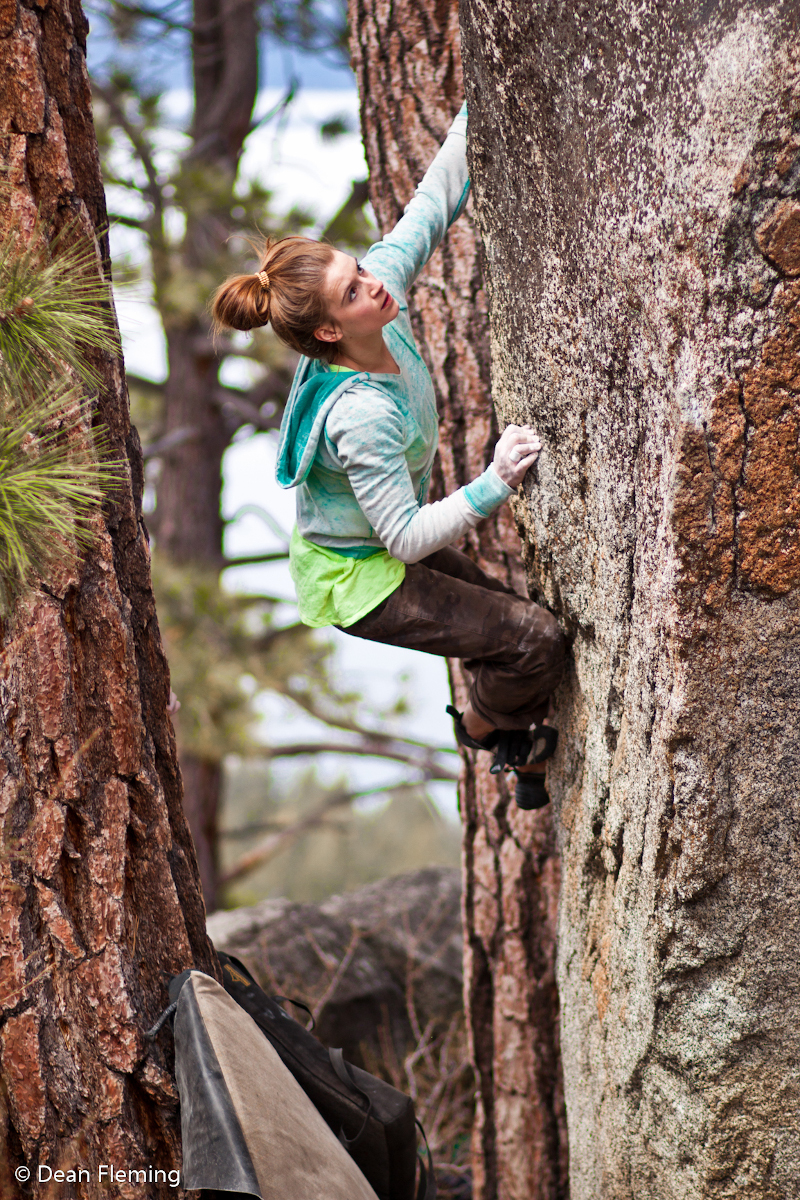
Among the Zephyrs’ four established areas, the Mecca area hosts the highest concentration of problems and offers an excellent quantity of problems in the V2 to V4 range. Located at the top of an incredibly scenic, nearly 360-degree panoramic hillside, the boulders of Mecca are compact, clean, and shaded by a stand of large pine trees. Among the boulders exist plenty of flat, soft, and awesome places to hang out and gaze across the lake all the way to Tahoe’s West Shore. Although the approach is a little bit longer than the other zones (25 minutes of uphill hiking), if you only have one day to visit the Zephyrs this is definitely the spot to check out.
…if you only have one day to visit the Zephyrs [the Mecca area] is definitely the spot to check out.
As a convenient place to boulder on the approach to Mecca (or for those who want to break up the 25 minute hike), many visitors consider stopping by the Easy Street Area for a great warm-up circuit. Another option is to skirt up a short hillside near a water tower to the Briquettes. This zone includes an awesome warm up circuit and more than a handful of excellent quality problems in the V5 to V7 range. The Briquettes are home to a unique thin crack problem with a high topout called Ratatouille (V3), the Buttermilks-quality, dime-edging testpiece Lumberjack (V6), and the confusing double-pancake roof of Don’s Special (V1).
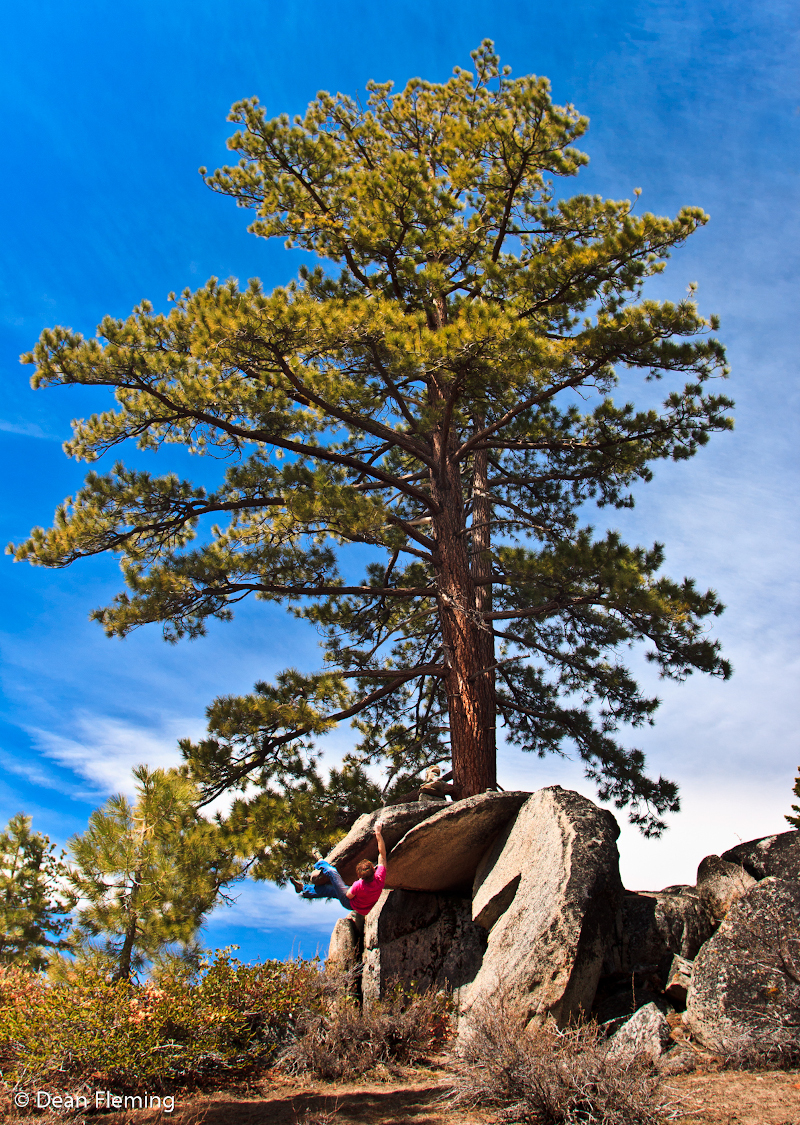
For those seeking a very short approach (3-4 minutes) and a nice place to throw down the pads and session one mega boulder for an afternoon, the namesake Zephyr Boulder is probably the best option on the ridge. This wildly colored orange and black streaked blob overhangs on nearly all sides and offers incredible rock quality and a wide range of problems from V0 to V8. A few must-do problems on the Zephyr Boulder include a really prominent left-leaning rail to a series of holds and a crux topout called Dropping In (V4), the technical pillar and amazing sculpted jugs on Trade Winds (V4), and the burly compression and solid patina holds on Piece of Mind (V8).
“The East Shore is sometimes referred to as the banana belt because it is generally the warmest, driest place on the lake.”
“Most locals consider the East Shore the black sheep of Tahoe bouldering,” added Hatchett. “A lot of the rock can be marginal in quality and most of the areas are certainly not Tahoe’s finest. There is a silver lining though: The East Shore is sometimes referred to as the banana belt because it is generally the warmest, driest place on the lake. J Sell’s recent discovery of the Zephyrs really helped the cause on the East Shore; it’s the biggest and best spot so far.”
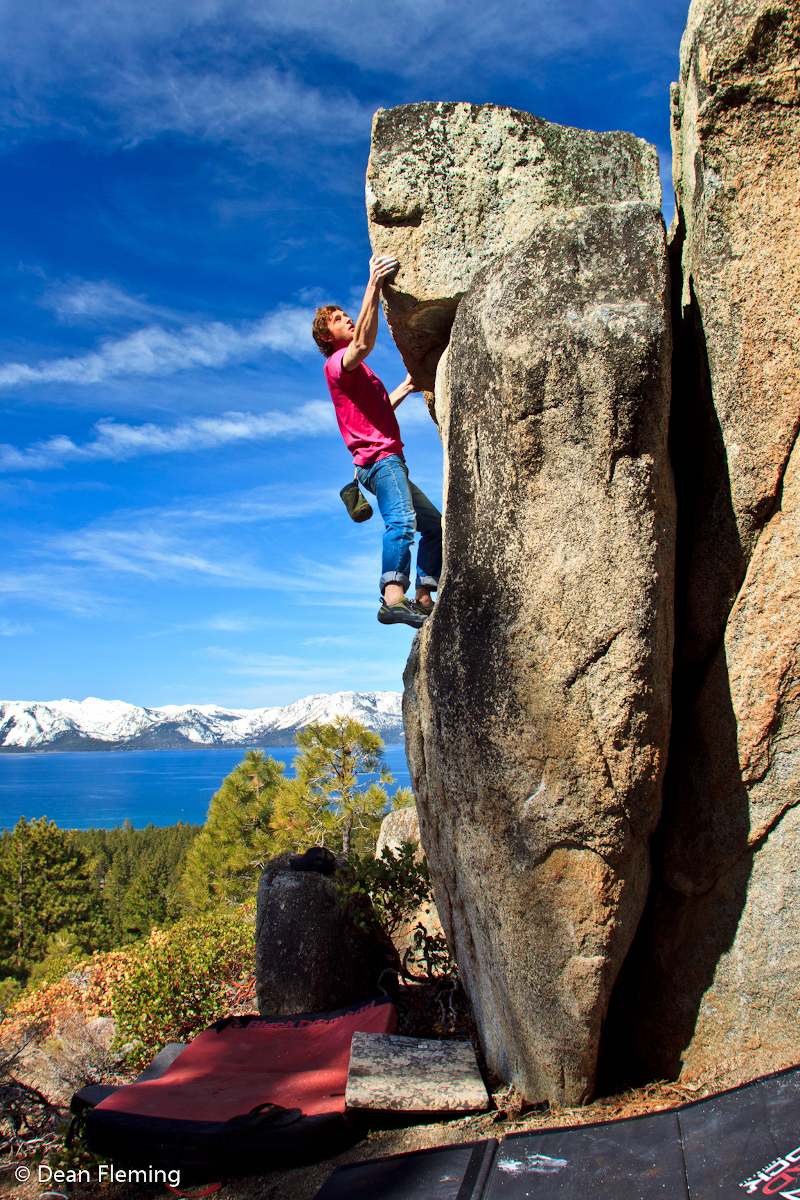
Special Concerns
With thousands of square miles of wetlands, shorelines, streams, and fragile high-elevation forests, the Tahoe Basin is a thriving and diverse ecosystem that is almost entirely protected by State Parks or Wilderness designation. The area is also heavily patrolled by Park or Wilderness Rangers. Please try to stay on existing trails and do not destroy or remove vegetation in this region.
Major concerns while climbing at the Zephyr Boulders would include camping, disposing of human waste, and fires. Camping at or near the parking area for the Zephyr Boulders is not legal and will cause access issues, but there are plenty of excellent quality campgrounds nearby.
*As of the initial writing of this article, Hatchett’s guidebooks were still in progress. They are now all complete and available for purchase.

